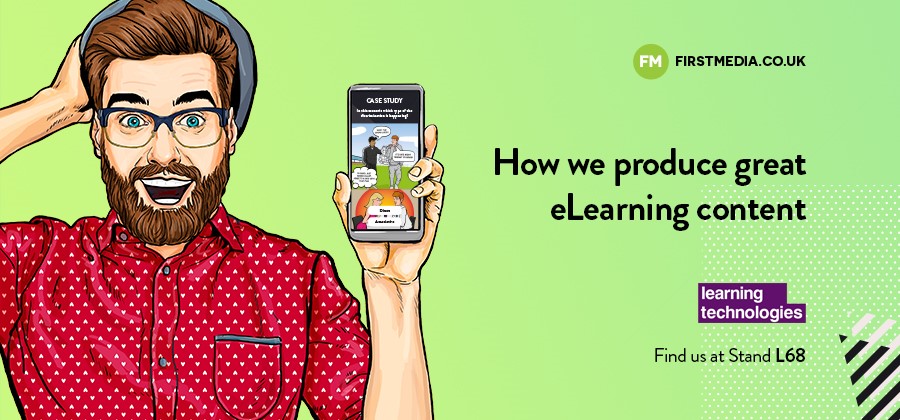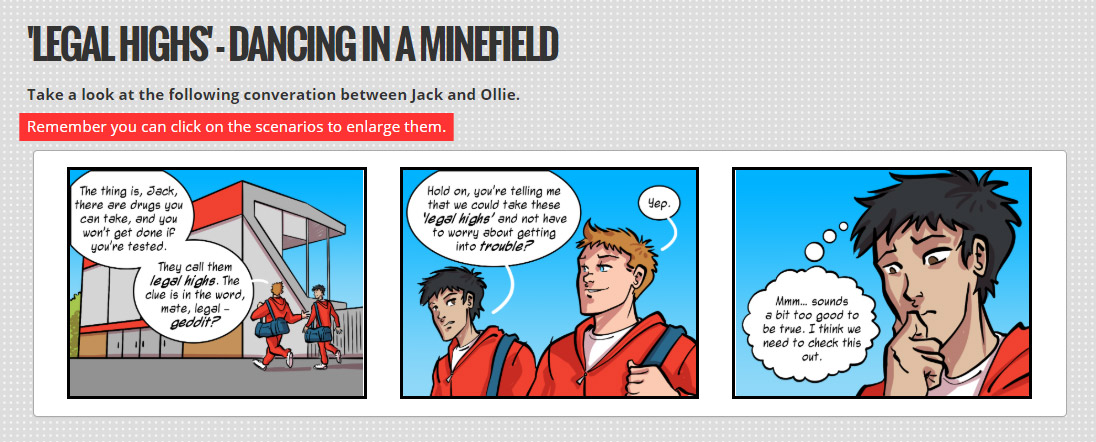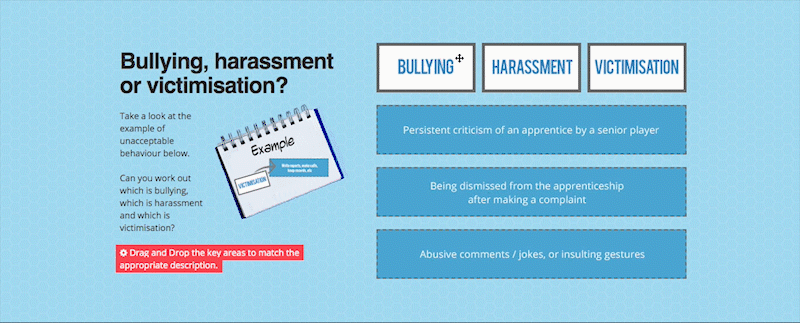9 Top Tips for a Stand Out Web Design
Simple, helpful techniques to improve your web design, increasing traffic to your website, engaging and retaining viewers. Here are 9 simple…

For the first decade or so of its existence, most eLearning courses were too text-heavy, too dull and far too formulaic. But then in the noughties, around the time when social media burst on to the scene and started to revolutionise the way that people consume digital media, eLearning had its own renaissance. Some eLearning design specialists embraced the advancements in technology and change of thinking and started to create great eLearning that puts the user at the centre of everything. We are one of the eLearning design specialists who do this better than most.
Why do we always put the user first? Because it generates engagement. And if a user is engaged with the course, they are more likely to complete it and for the embedded learning to filter through. Another million-dollar question is ‘how do you engage an audience’? The truth is that there isn’t one way that works for everyone. Every audience is different. But, as Liam Neeson might say, over the years we have acquired a particular set of skills (or in this case, techniques) which we always include in our content.
First off, we make sure our eLearning is bright and vibrant because, at the end of the day, humans are all visual animals, so it’s important that the content is appealing to the user. Or at least not dull, anyway. Strong visuals also help to elevate the overall look and feel of the content. If we’re working with a client such as the Premier League, who are known for their eye-catching branding, we like to include as much of their identity in the content as possible. Not only because it looks good, but because it will also feel right to the user. We also believe that the content shouldn’t ever feel too heavy. If it does, you have a problem because there’s no way that it’s going to keep someone’s attention! To prevent it, we like to divide up information into bite-sized chunks because then we can be creative with how we display the content; making it much more palatable for the user.
Good storytelling is vital to great eLearning and interactive design helps to bring content to life. If it’s true that a picture says a thousand words, how much more can a video communicate? Video helps make the content more much memorable and it can re-create real-life scenarios. When used well, it really can enhance a users’ understanding of a subject. Video is great at holding a mirror up to real life, but Illustration and Animation are fantastic at bringing to life more abstract concepts. An eLearning designer has complete control over both the medium and the message when using illustration and animation; whether that’s a diagram, infographic, character or scene.

Another proven way of increasing engagement in eLearning content is by including Quizzes – because some people really like testing their knowledge. Traditionally, these come at the end of a course and can provide a useful metric to prove the overall effectiveness of the learning. But we like to play around with when knowledge checks take place. Why do they have to be at the end of the course? In longer courses, we often have a couple of interactive videos, scenarios or drag and drop graphics at the end of each section rather than a multiple-choice ‘test’ at the end. One of the more recent design trends for eLearning is the use of Gamification in the content. With the inclusion of a few clever challenges and rewards, it is possible to help both motive and engage the user. Gamification is a gaming technique that’s been used to hook people for years, so it’s a savvy addition to any eLearning course that wants to engage its audience.

Although these interactive design techniques will no doubt elevate your content, the most important thing to consider is the message. After all, it’s the reason why you’re creating the course! We pride ourselves on really getting to know our clients, the subject matter and understanding what it is they are trying to communicate with their audience. If the course is a brand induction, used to onboard new employees, the client will want the course to accurately showcase their company’s unique culture and get across all the company values; but if we’re building a Health and Safety module aimed at a group of apprentices, it’ll will be full of interactive design features to keep the audience engaged and also a way to gain insight into the users’ knowledge and the overall effectiveness of the course.
Everything we’ve spoken about in this article goes into consideration when we produce our eLearning. And we believe this level of detail, combined with our ability to produce genuinely innovative content, has resulted in us working with some huge clients; some of which we’ve worked with for almost 20 years. The FA is one of those clients. Over the years we’ve produce eLearning content for young players, coaches, club officials and match officials on topics including Equality and Diversity, Safeguarding, Anti-Doping and, most recently, Betting Integrity.
So regardless who the content is designed to interest, or the message you’re trying to get across, we know how to produce great eLearning content.
If you’d like to talk to us about a project, call 01507 607783 or email hello@firstmedia.co.uk. Or if you’re coming to Learning Tech 2020 on the 12th or 13th February, come and find us for a chat. We’ll be at Stand L68.
If you’d like to speak to us about how we might be able to help you with your next project, call us on 01507 607783 or fill out this form and we’ll be in touch in a jiffy.
|
You should also read…
Simple, helpful techniques to improve your web design, increasing traffic to your website, engaging and retaining viewers. Here are 9 simple…
Last week the Chancellor announced new investment in digital skills distance learning courses.
We've had not one, but two First Media babies during Lockdown!